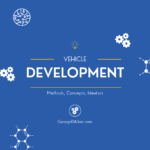Usecases: Development of the Prerequisites – New Databases

New Databases for Usecases
Introduction – Usecases: Development of the Prerequires
Continuing the discussion on the potential utilization of sensing technologies within vehicle content, it is imperative to delve into the Usecases, or the behavioral scenarios to which the algorithms and the potential applications would be developed. These prerequisites are pivotal in fostering the development of advanced sensing functionalities.
Therefore, the totality of all scenarios needs to account for the Occupants’ behavior, Environmental variations, Vehicle status / conditions, and their interactions. These would lead to the development of the high-level logic for the System’s execution.
Reference: https://georgedallen.com/development-of-the-prerequisites-new-passive-safety-features/
Unlocking Vehicle Safety: Usecases for Advanced Passive Safety Functions
Ordinarily, the specific technology is developed to address a specific family of the Usecases. Which resolves a particular functional intent, if it works. However, this approach has a lot of underwater mines, as it does not account for all possible scenarios and the failure modes coming with them.
Sequentially, this leads to late findings of issues problems related to the applications. Which concludes with understanding of the software limitations, and then inconsistency of employed logic, etc. Ultimately, the “bottom-up” applications will always be limited to the specificity of the developed and tested capability. This is not a “user-oriented” design, but rather the Technology application way.
Moreover, the proposed method to develop the Databases of the possible scenarios independent from technology to be used, which can be prepared upfront for the intended functions. Later on continuously updated for the rest of the intended applications, etc.
Furthermore, this activity can utilize AI and human resources, all of the available environmental and anthropometric data and other available information related to the Human-Vehicle Interaction.
Content to be covered in the Usecases: Occupant and Vehicle Related
1. Occupant Behavior Usecases:
- Single Alive Object approach and entry into every opening, movement into the Field of View and within the Interior
- Location Usecases within the Field of View
- Described logic for the additional Alive Objects scenarios, beginning with the second, the third, etc., approach and entry into every opening, movement into the Field of View and within the Interior
- All sequential additional occupants Usecase until total occupancy achieved, and then until the Interior is full – Potential Total Occupancy
- Head Count System Function – Introducing additional necessity – inclusion of the Occupancy Status by counting the number of the present occupants and readiness to report it whenever the Signal Outs requested
2. Vehicle Status and Usecases Scenarios:
- Standardized descriptions of vehicle status scenarios – No power, Idle, Running, etc.
- Stationary – all doors closed, one or more doors open, windows closed / open, etc.
- Dynamic – vehicle in motion (normal conditions), various abnormal possibilities – a door open, windows closed / open, etc.
- Hatchback – open closed, etc., cargo space full of objects or empty, etc.
- Account for the Vehicle Durability and wear, reference General Durability testing as well as extreme shaker testing, similar to the four-poster shaker test
References:
General Durability: https://blog.mopar.com/what-goes-into-vehicle-durability-testing/
Four Poster Shaker: https://vibrationresearch.com/blog/controlling-4-post-shaker/
Content to be covered in the Usecases: Environment and other Interactions
3. Environmental Variations Usecases:
- All potential Light related variations – from complete darkness to complete maximum light
- All potential Temperature variations – from negative 40F to the melting temperature within interior (could be 120F, or an arbitrary number at which the Interior materials can deform
- Possible moisture variations, same as the Interior Components are tested at
- Accountability for Possible magnetic interference – either natural, or physical presence of the magnetic particles
4. System Power availability Usecases:
- No power
- Power initiation conditions
- Go to sleep conditions
- Wake up conditions
5. Definite development of the scenarios covering the combinations of the described above
Reference. Environmental Variation Testing: https://www.automotivetestingtechnologyinternational.com/features/a-guide-to-environmental-testing.html
Notes on the Potential AI Application:
In the realm of vehicle systems engineering, leveraging artificial intelligence (AI) presents immense potential for streamlining various processes. Let’s delve into how AI can be utilized to address the development of the Databases for the Usecases:
- Generation of Databases: AI tools can be instrumental in generating comprehensive libraries encompassing occupant behavior, vehicle conditions, and various environmental factors. These databases serve as valuable repositories of essential information for system development and analysis
- Logic and Algorithm Development: AI facilitates the initial development of logic and algorithms crucial for system operation. By harnessing machine learning algorithms, engineers can create intelligent systems capable of adaptive decision-making and efficient data processing
- Integration with Virtual Simulation: AI plays a pivotal role in integrating advanced functionalities with virtual simulation environments. This integration enables realistic testing scenarios and facilitates rapid prototyping, reducing development time and costs.
- Automated Data Analysis: AI-powered tools streamline the analysis of vast amounts of data generated during system testing and validation. Automated data analysis enhances efficiency and accuracy, enabling engineers to derive actionable insights and optimize system performance
- Continuous Learning and Improvement: AI systems have the capability to continuously learn from data and improve over time. This iterative learning process ensures that vehicle systems evolve to meet changing requirements and technological advancements
- Adopting the Usecases into the evaluation conditions, as well as into testing and validation procedures
By harnessing the power of AI, vehicle systems engineers can effectively address the complex prerequisites inherent in advanced system development. Embracing AI-driven solutions fosters innovation, accelerates development cycles, and ultimately enhances the safety and performance of vehicles.
“Total Occupancy” Usecase Example Usecase Discussion
The Systems Engineering holistic approach to complexity of the final product functionality begins with the high-level functions definition and the assumption that a hypothetical model will work to accomplish just that.
For example, “The Total Occupancy” Usecase is the potential vehicle condition where each seat would be occupied, the cargo space filled with objects, and even the rest of the Interior Volume filled with either occupants or objects.

Comments: “Total Occupancy” Example Usecase Discussion
Consequently, each Usecase needs a deep-dive discussion for the intended functionalities (addressed separately). For the purpose of the Notification functionality of the Occupant Sensing, the Total Occupancy Usecase is one example to look at.
Let’s take a hypothetical vehicle, with a fully developed technology set capable to identify the incoming occupants. Let’s examine the condition when the Interior is going to be full to its capacity. What can be accomplished with full system capabilities:
- Accountability for every alive present object
- Location of every one of them at certain time with some level of approximation
- Total count of them
- Assessment of their Seat Belt Usage and even routing
- Readiness for the ride
- Readiness to report this information to the functional interface
- The classification is not yet included and it is discussed separately – reference link
- The occupancy of Cargo space, presence there non alive objects, capacity of it used, and other information – can be worked out per higher level requirement, if necessary
Conclusion: the Development of Usecases Databases
In conclusion, the journey towards advanced occupant sensing systems requires a comprehensive understanding of the Occupants’ behaviors inherent to the interaction with the vehicle environment. Sequentially, the knowledge related to the specific Vehicle Content application will help to plan all of the necessary development activities, including:
- Logic for the System Execution leading to the software algorithms to be assigned to the systems elements – direct contribution to the Subsystem SOR documentation
- The development of the simulation package necessary for the verification of the intended System’s logic
- The planning and costs related to the Product Development and Product Validation tests
- Related to the specifics of the chosen technology, it will contribute to the mechanical and electrical elements of the subsystem design and interfaces
- Etc.
Finally, by embracing proactive and collaborative efforts to address these prerequisites, stakeholders can accelerate development processes and usher in a new era of vehicle technology excellence.
References:
Virtual Development: https://georgedallen.com/virtual-development-embracing-tomorrow-today/
“Virtualization” definition: https://en.wikipedia.org/wiki/Virtualization
About George D. Allen Consulting:
George D. Allen Consulting is a pioneering force in driving engineering excellence and innovation within the automotive industry. Led by George D. Allen, a seasoned engineering specialist with an illustrious background in occupant safety and systems development, the company is committed to revolutionizing engineering practices for businesses on the cusp of automotive technology. With a proven track record, tailored solutions, and an unwavering commitment to staying ahead of industry trends, George D. Allen Consulting partners with organizations to create a safer, smarter, and more innovative future. For more information, visit www.GeorgeDAllen.com.
Contact:
Website: www.GeorgeDAllen.com
Email: inquiry@GeorgeDAllen.com
Phone: 248-509-4188
Unlock your engineering potential today. Connect with us for a consultation.

